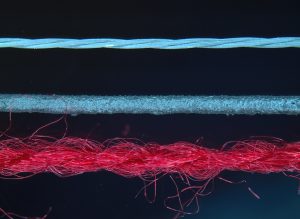
Researchers from MIT’s Computer Science and Artificial Intelligence Lab (CSAIL) have designed a clothing which makes use of special fibers to sense a person’s movement through touch. The clothes are also capable of determining if a person is walking, sitting or doing other poses.
The research team reports that their clothes could be used for athletic rehabilitation and training. With the permission of patients, they could help monitor the health of residents of assisted-care facilities.
They developed prototypes which include socks, gloves and a full vest. The team’s ‘tactile electronics’ uses a combination of more typical textile fibers coupled with a small amount of custom-made functional fibers which sense pressure from the wearer of the garment.
According to CSAIL graduate student Yiyue Luo, a principal advantage of the design is that it is incorporated into traditional large-scale clothing production. The textiles are soft, stretchy, breathable and may take a wide range of forms.
’Traditionally, it’s been hard to develop a mass-production wearable that provides high-accuracy data across a large number of sensors’, says Luo. ‘When you manufacture lots of sensor arrays, some of them will not work and some of them will work worse than others, so we developed a self-correcting mechanism that uses a self-supervised machine learning algorithm to recognize and adjust when certain sensors in the design are off base.’
The clothes have a wide range of capabilities. The socks predicts movement by observing how various sequences of tactile footprints correlate to different poses as the users changes from one pose to another. The full sized vest can detect the wearers’ pose, activity and texture of contacted surfaces.
The authors imagine that a coach could use the sensor to examine people’s postures and suggest ways for them to improve it. An experienced athlete could also use it to record their postures so newbies can learn from them. In the long run, robots may even be trained to learn how to do a range of activities using data from the wearables.
‘Imagine robots that are no longer tactilely blind, and that have “skins” that can provide a tactile sensing just like we have as humans’, says corresponding author Wan Shou, Postdoc at CSAIL. ‘Clothing with high-resolution tactile sensing opens up a lot of exciting new application areas for researchers to explore in the years to come.’
Co-authors of the paper include MIT Professors Antonio Torralba, Wojciech Matusik and Tomás Palacios, alongside PhD students Yunzhu Li, Pratyusha Sharma and Beichen Li, Postdoc Kui Wu and Research Engineer Michael Foshey.
The research was partially funded by Toyota Research Institute.
By Marvellous Iwendi.
Source: MIT CSAIL